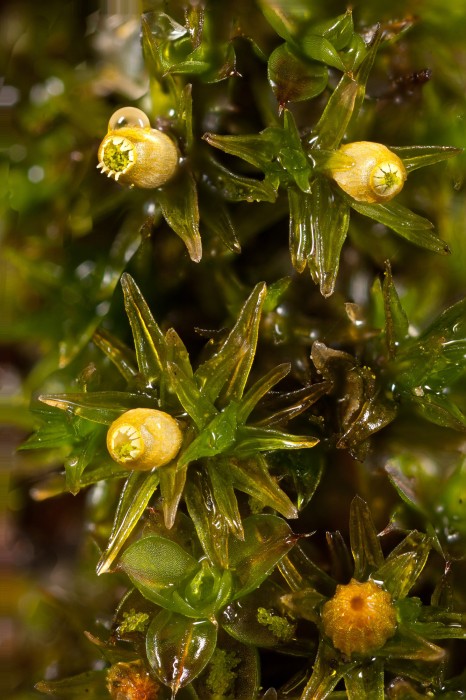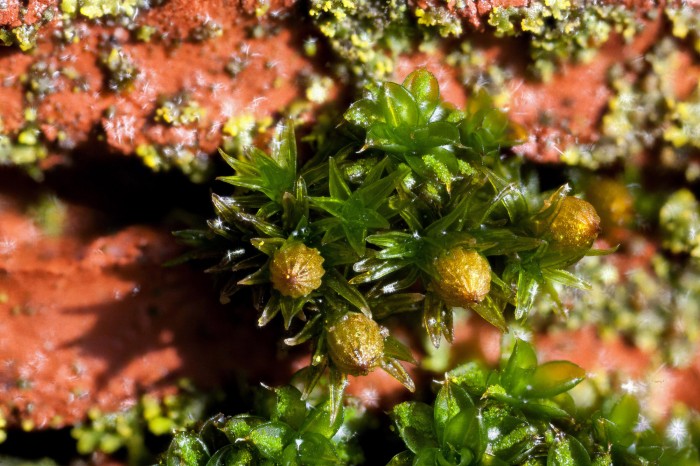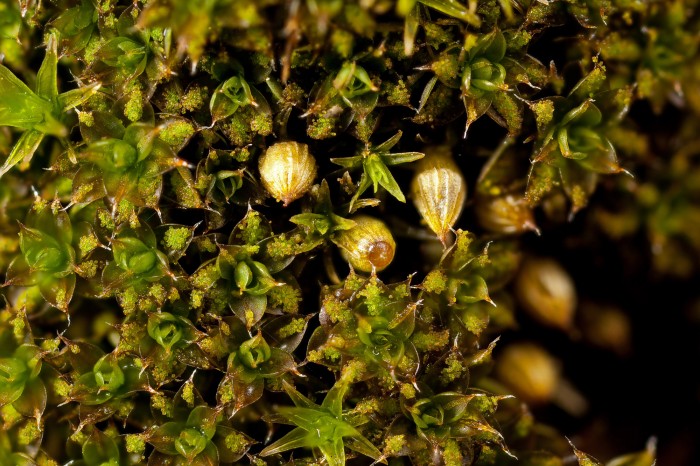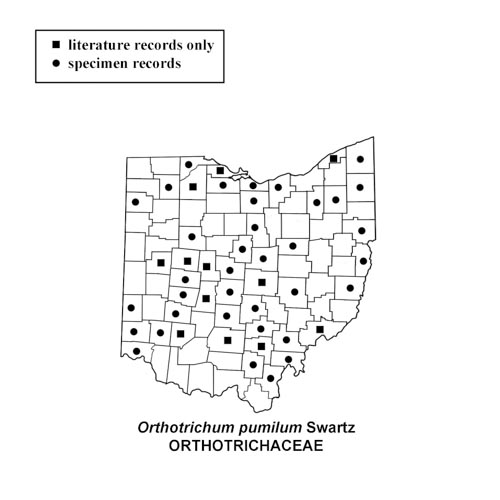Orthotrichum pumilum
“low bristle moss”

Orthotrichum pumilum on masonry in Columbus, Ohio.
April 20, 2011.

Orthotrichum pumilum on masonry in Columbus, Ohio. January 23, 2012.

Orthotrichum pumilum (leaves without brood bodies) with Syntrichia papillosa. March 7, 2013.
How to recognize low bristle moss: Orthotrichum pumilum occurs in small dark green tufts. It is a cushion moss with little 1-1.5 mm long capsules barely emergent above the upper leaves. This moss genus has significant differences between the capsules which require a compound microscope to sort them out. The calyptra (capsule cover while developing) is naked or sometimes with a few sparse hairs. The apiculate leaves which are erect when dry and wide spreading when wet, have large cells compared to other species in this genus (14-20 microns long); this and technical features of the sporophyte (immersed stomata; distinctively 8-ribbed capsules) distinguish this from several similar species.
Where to find low bristle moss: Orthotrichum pumilum occurs on the bark of hardwoods and masonry, commonly along roadsides in cities.

